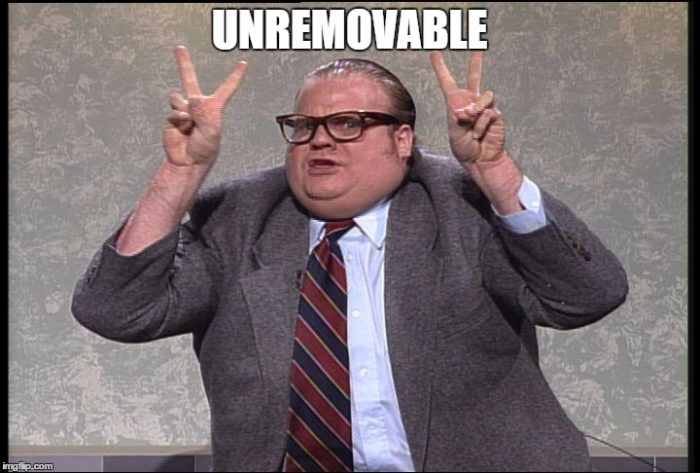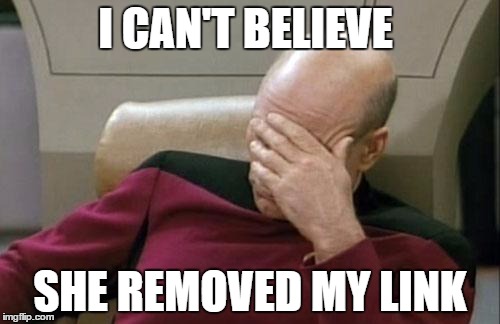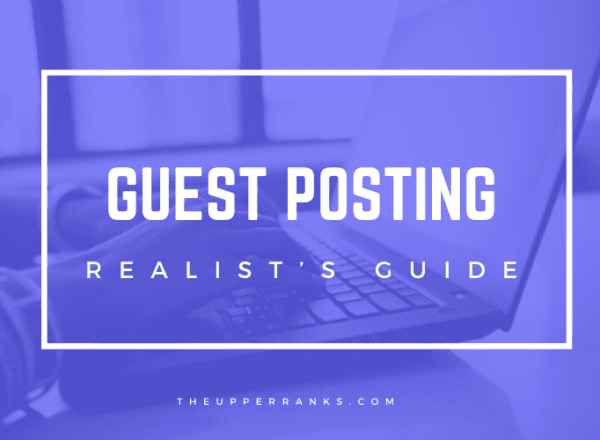Building links with guest posting has become controversial over the years. Several years ago, it was easy to pump out low-quality, spun, or duplicate content and trick an unsuspected blogger or webmaster into posting it for you.
Many of those guest posts were stuffed full of crazy anchor texts and wall-to-wall links. They served no purpose for any actual, human reader.
There were (and still are) huge, labyrinthine websites dedicated to nothing but spammy, unreadable articles, crammed full of links to pages most people wouldn’t want to end up on.
Thankfully, we’ve mostly moved past that. But guest posting for links is still somewhat controversial and I addressed this in an interview on The Rankings Podcast a few months ago.
For guest posting as part of your link building campaign, here’s my motto:
Just because you’ve earned the guest post, doesn’t mean you’ve earned the link.
Guest posting can still be valuable, and it can still be a great method to build links. Many link building agencies and many in-house teams for many businesses still use it as an effective method to build links.
But guest posting isn’t as easy as it once was, and you’re under greater scrutiny, now, than you ever have been in the past. We have to work harder, now, and for good reason.
If you’re doing it right, guest posting won’t be an easy win.
But it can be worth your time and definitely has a place in an overall link building strategy.

And bear in mind this: the links in your content must always make sense and add value.
How to Approach Content
Guest posting doesn’t work without content. So, where do you start? What do you write? And who do you write it for?
For guest posting, there are two basic approaches:
- Method 1: Write an article and afterward try to find a site (or multiple sites, as a backup) that’s a good fit.
- Method 2: Write an article with a site already in mind, carefully tailoring it to that site’s audience.
For many small in-house teams and time-crunched agencies, the first method seems to make more sense. You can write a post and send it to multiple sites, without banking on only one site, who may or may not publish your work.
It can also eliminate some lengthy outreach chains—sometimes, you have to introduce yourself, make a pitch, write the post, make edits, and wait on a reply.
Also, some editors prefer you just send them a complete article, since they don’t have time for lengthy email conversations, either.

With this first method, you can also shoot your post to a couple of sites and see who replies and what sticks.
The only problem is– two or more sites might publish it at the same time, and sometimes, they won’t even tell you. Then you must fight to get one or more posts taken down, and trust me; that will burn bridges. So I’d exercise caution if you plan on sending one article to multiple publishers.
The second method takes more time, but it usually yields better results.
When you painstakingly craft a post with a site’s audience in mind, you’re more likely to get published. This is especially true if you make note of the posts their audience responds to. Find out which posts have the most shares and comments and then write in that direction.
There is still a chance they won’t accept your post, or they’ll never even get back to you. Guest posting isn’t easy.
If that’s the case, you must rework the post for another website, which will take even more time.
There’s no surefire way to make sure you’re published, but I recommend writing your content with a specific site in mind. In my experience, it’s more likely to succeed, even if it takes longer.
Understanding the Target Site
If you’re going with the second method I listed in the last section, you need to understand your target site on a nearly-intimate level.
Here’s my quick method for getting to know a target site:
- Figure out the blog’s overall topic, focus, and goal
- Read 3-4 posts on the blog in full
- Read the site’s “about us” page and every author bio you encounter
- Read at least 3-4 comment threads to see how their audience responds to various posts
- Read their guest posting guidelines if they are available
- Read a few pages of their Twitter, Facebook, and LinkedIn feeds
If you want to get published on a relevant, quality site (even if it’s not a big name), you must understand the site’s audience.
Is the audience there for useful, actionable content?
Are they there for entertainment?
Are they there, just because they like the blogger’s voice and tone?
Once you’ve established that, you’ll need to figure out how to engage the target site’s audience and please their blog administrator.
Of course, I make sure it’s a real site with real people at the helm. I also make sure the site has been updated recently.
I’ll also run it through SimilarWeb to get an idea of the traffic it gets; not every guest post must target a blockbuster site, but you’ll likely want to know someone is reading it.
Creating content takes time, and there are ways to build links other than guest posting, so if you’re investing time and money into creating content, get the most value you can out of it.
Also, make note of how the webmaster wants you to send your content. If they want clean HTML and you send them a .docx or pages file, they’ll roll their eyes and ignore you.

It’s their site, so play by their rules.
Look at it from the editor’s perspective.
I liked this post on YouMoz, titled “Why We Only Accept 1 Out of Every 10 Guest Blog Pitches.”
From the post:
“Here are the top reasons we reject a guest blog (and why you should, too):
- The topic is irrelevant
- The company pitching the blog isn’t related to our industry
- The writing is terrible
- The blog is tailored to the wrong audience (B2C vs B2B or CTO vs CMO)
- The website they want us to link to is sketchy
- We’ve published a blog post from them recently
- The writing in the email is terrible and full of grammar issues
- The person hasn’t researched our business or even looked at our website
- The topic is too inflammatory
- The topic is relevant but not in line with our firm’s philosophy
- The topic is tired and overused
- There is no value for our audience”
So, there you go. Get to know your target site.
All of this takes even more time, but it will lead to more successful guest posts than a “run and gun” strategy.
Link Placement
Since guest posting is no longer the spammy, devil-may-care practice it once was, placing the actual link within your content will likely be your biggest challenge.
You can obviously link to your website in your author bio, but it may be a no-follow which won’t improve your rankings. It also may not be practical if you’re working on a clients’ site.
And a bio link isn’t as valuable as an in-content link, especially when the in-content link adds value to the content.
And your link absolutely needs to add value to the content.
In my previous article on guest posting, I said these link types are acceptable for guest posts:
- Links that provide additional information
- Links that cite a reference (quotes, numbers, statistics)
- Links to related topics or another take on the same topic
- Links to an author’s previous work
- Links that provide value to the reader
I also wrote:
“[Imagine you’ve published a guest post and you’re contacting the editor, asking to add a link afterward]. Would your editor, who is carefully considering both the original post and the additional resource, be happy to go back and add that link after they’ve already published? They’d only add a link that actually has merit. A link you’ve earned.”
So let’s take that a step further:
When you’re placing a link, build it in a way that the editor can’t remove it, because the link is so vital and indispensable to the content.

If you’re working with a credible site, you usually won’t be able to get away with linking to your homepage or a product page. There are exceptions to this rule, but they’ll require talented and creative writing.
Instead, you’ll need, what I call, a linkable asset, a page on your site you can link to within your content. Something interesting and relevant that adds credibility to your guest post.
Here are some ideas:
- A digital tool on your site
- A study or research with statistics
- An interview with an industry thought-leader
- A memorable video
- A useful infographic
There are other ideas, but I’m sure you get the picture. I’ll include further reading at the end of this section.
I also like to include at least one other link to a previous post on the target site. This shows the webmaster you’re paying attention, and it adds additional value to the reader.
Also include links to other relevant data, studies, news, or interviews. You want to serve the reader with each link, including your own.
Working with Editors
Working with blog editors is another big challenge in the realm of guest posting.
As link builders, we want to succeed. That means, we want our content published quickly, and we want to rack up some killer links in record time.
In that regard, editors can sometimes seem like a big obstacle.
A tough editor can publish a post that you worked on for 15 hours, and then strip out your link a few days later. It’s happened to me, and it’s devastating.

A tough editor can also reject your post outright, give you editing suggestions that make little sense, or stop you in your tracks.
But these editors are there for a good reason.
A good editor protects their site’s reputation and protects their site’s audience. They’re there to make sure every piece of content on their website serves their goals, meets their audience’s expectations, and protects their brand integrity.
As business people, we can respect that.
I have three main ways of dealing with tough editors:
- I make sure I know the site before I write the post, and I make double-sure my link is essential to the article, so there’s little chance it will be removed.
- I build a relationship with the editor before I send the post, either on social media, in the target site’s comments section, or through email.
- I make sure I know exactly why I included every link in the post, and I can support why it fits and how it serves the site’s audience.
I’ll be honest, though. You really can’t win ‘em all.
If it comes down to a slugfest over a link to your site, the editor will always win. You can’t force someone to change their mind, especially on their own website.
Sometimes you’ll spend countless hours on an article and not have a link to show for it. But, it’s not all bad. Guest posting is valuable for more than just links. It brings branding opportunities, networking opportunities, and can bring in relevant traffic to your site.
No matter what, just be civil. Don’t burn bridges. Even when you feel like you’ve been robbed, move on to a different opportunity.
No one owes you a link, no matter how good your content is.
Waiting to hear back from Editors
I’ll keep this section brief, but know that guest posting involves a lot of waiting.

The publishing process can take days, weeks, or months. If you need results within a week, use a link building strategy other than guest posting.
Most site owners are transparent about how long they’ll take to publish. And it can take a while. After all, they have to edit, format, add images, and plug the post into their CMS. And they likely have quite a few posts in their queue.
Waiting is as much a part of the guest posting process as writing, site prospecting, and outreach.
Final Thoughts
Like any link building method, guest posting takes time and practice. Even if you’re a strong writer, you must still worry about link placement, prospecting, and outreach.
I write these “realist’s guides” because there is no magic formula to link building. You have to put in the time and experience disappointment before you get results.
If you plan on using guest posts for your link building campaign, I hope this post gave you some useful, practical advice.
If you have any questions, feel free to ask me in the comments below.

Comments
Great article David. The 2nd method always works best for me. Your advice on getting to know the target site, is spot on. I would like to add, that it’s a good idea to look at content topics that may have done really well on the target site previously, but haven’t been written about in a while.
Great tip right there, James!
Great stuff, David. A thorough overview of guest posting, and you’re clearly a seasoned veteran here. Fantastic advice!
Thanks for stopping in and the kind words, Jayson 🙂
Great content is absolutely important, and the article should, of course, target the site’s audience and bring value if possible. I love your suggestion of taking the time reading a few articles and their comments to better understand the target audience.
That’s right Nirmal! Definitely worth the extra few minutes to familiarize yourself with the style and tone of the site. Thanks for stopping in 🙂
Great stuff.
I find out I have more success when I already have a target site in mind, rather than writing the article first and then finding where to post it.
Love your writeups
Glad you enjoyed it, Niyi!
An awesome and advantageous article on guest posting! Reading few other articles of yours makes me clear about the idea though. Thank you David.
Thanks so much, Srishti 🙂
Thank you for this post. I’m just starting out to guest post and think this is a wonderful guide for beginners.
You’re welcome, Daniel and best of luck with that!